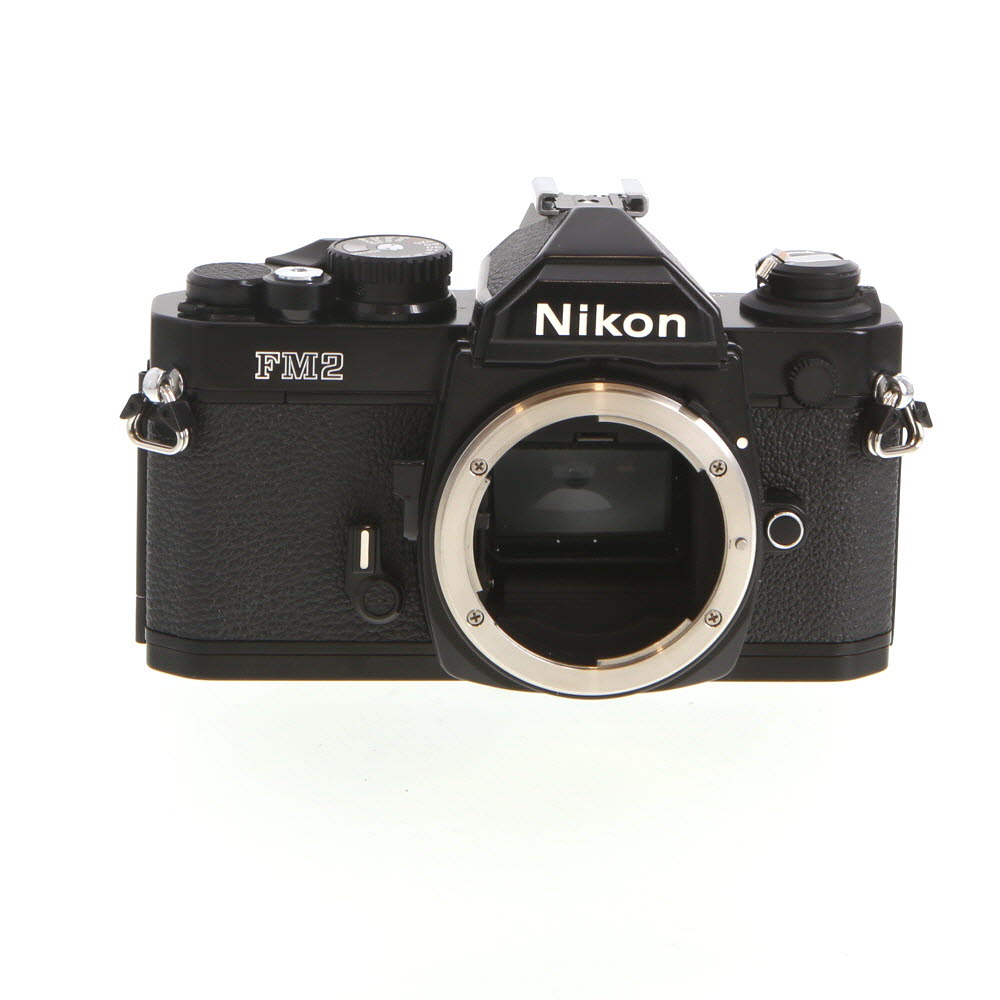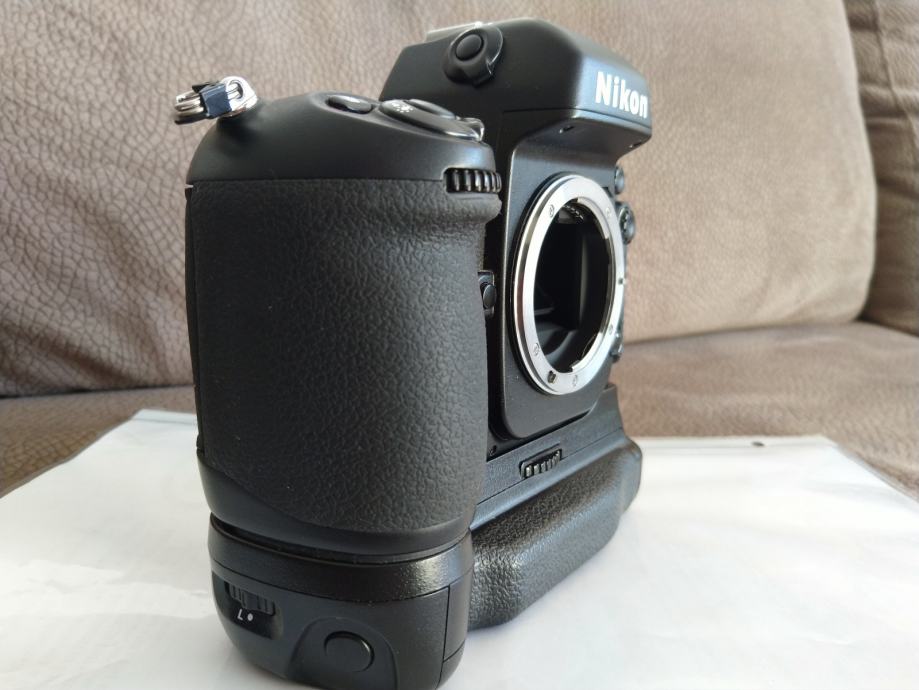Some people have asked me about a NIKON F5 Serial number & Manufacturers date guide. For all those interested, here are the details for the NIKON F5: Serial/Number Manufacture/DATE 3033XXX LATE 1996 30329XX JUN 1997 30372XX MAY 1997 303XXXX SEP 1997 306XXXX LATE 1997 3102XXX LATE 1998 315XXXX DEC 1999 3134XXX AUG 2000 3167XXX AUG 2001. This page is a summary of Nikon lens serial numbers, specifications and accessories. For more details, go to the relevant page. Versions with the same optical design are grouped together. Minor optical updates are separated by a thin line. Introduced in 1992. AF Nikon lenses with a CPU that also relays Distance information to the camera, most useful for ultra-precise TTL flash. Among the first were the 35-70mm f/2.8D AF and 80-200mm f/2.8D ED AF Nikkor. AF-I: Introduced in 1992. AF Nikon lenses with a coreless Integrated motor for. Since the US D7100 number comes after the initial number for the smaller Japanese market, it makes some sense to 'steal' some of the Japan numbers for the larger US volume. But also oddly, we’re now seeing that a lot of other country serial numbers don't tend to have a 0 as a second digit, which is another departure for Nikon.
- Nikon F100 Serial Number Listing
- Nikon F100 Serial Number List For Sale
- Nikon F100 Serial Number
- Nikon F100 Specs
Nikon F4 Modification |
The Nikon F100 is a 35mm film-based single-lens reflex camera body introduced in 1999. It is often thought of as a scaled-down version of the Nikon F5, and as a precursor to the Nikon F6.The F100 was discontinued, along with most other Nikon film cameras, in 2006. Nikon still markets two 35mm film cameras, the F6 and the FM10, the later is made under contract by Cosina.
Moose Peterson, in his NIKONSYSTEM HANDBOOK (3rd edition) lists several modifications to the F4 madeearly in the production run, between serial numbers 2100000 and 2180000.These include:
1. changes to the shutter speeddial -- clearer lettering, a higher unlocking button, and greater tension.
This may have taken place between 2115101 and 2146957.
2. a change to the switchon the viewfinder that sets metering modes; the protrusion that allowsone to turn this switch has been lowered in profile to avoid unintendedshift from one metering mode to another.
Nikon F100 Serial Number Listing
This change took place AFTER 2146957.
The original switch has a protrusion to help turn theswitch that sticks up above the top of the switch where it can catch thingsand cause the metering to change unintentionally.
The new switch has a protrusion as well, but it extends'out' rather than up and is much less likely to be moved accidentally.The spring tension on this switch has also been increased. This ALSO tookplace after 2146957.
Pictures of the original metering switch can beseen in THE NIKON COMPENDIUM, p. 30.
3. the spring on the release leverfor opening the back is stronger.
4. the battery warning respondsat a lower voltage.
According to Walter Pietsch,Nikon made additional modifications in the F4 since its introduction in1988. They are:
1) Some strengthening of the metalbody, undetectable to the eye.
2) The original F4s had paint usedon the shutter speed numbers that peeled and flaked off. If this hasn'thappened to yours, then you've got the later model. This change may beincluded in Moose's change #1 above.
3) Finder has double security tobe removed - you need to press the release button until finder is 3/4 off.Moose describes this change (NIKON HANDBOOK, 4th edition) as use of a 'doubledetente on the finder release lever.'

The release button on the older model basically looksthe same, but it works differently. On the older model as soon as you pressthe release button the finder is fully loose and can fall off.
Lawrence Ang reports that this change had been madeby the s/no 2301000 body.
4) There is a small rubber 'tooth'that sticks out at the top of the right-hand grip and rests on the user'smiddle finger. This gives more support and a secure confident feeling foryour right hand.
Lawrence Ang (6/5/97) reports that this 'tooth' was missingfrom the original model MB-20 grip as well, and was added later to thatgrip. (Nikon must has liked this feature; it was added to the design ofthe 6006 and other models).

5) The pin which detects whetherthe back is open or not was initially a metal and is now made out of whiteplastic.
6) The battery switch inside theMB-21 grip is now labeled 'Ni-Cd' rather than 'KR-AA.' #6) The finder nowhas an extra hole in the hot shoe for the security pin of the SB25 andSB 26 flash units.
This last change seems to be mostrecent. It appears in F4 bodies with serial numbers after 2500000 (Update:Body upto s/n 2500764 haven got the pin modification),but does not appear in bodies with serial numbers between 2400000 and 2500000.
Thus for F4 serial number 2523898, subtract 2100000 toget 423898. Divide by 5000 and get 84.7796. Round to 85 to get 85 monthsfrom September of 1988, or 7 years one month, giving approximately October1995 as the date of manufacture.
Note: Walter says that this process of calculation doesnot work for F4 bodies for which the serial number starts with 22

Late 1996 | 250076x | |
1997 or '98 | 2592999 | with all the known modification made. Purchased in Michigan, USA. (credit: Marc Akemann ~ mnakemann@teleweb.net ) |
If you have any Nikon F4 / 4s / 4e camera,please send me the related info..your contribution is very very much appreciated.
ps: The easiest way to identify your F4 bodyis the has the latest changes is by verifying whether the hotshoe has apin hole on it. However, please notice also that the viewfinder can bechanged.

Update Dec 2000: Nikon F4 withserial number 261xxxxx is still available in Japan. It is believe that serialnumber 261xxxxx is the last batch Nikon produces, and there should be no serialnumber 262xxxx. Nikon F4 is selling at around 140000~160000 yen in Japan. I knowa someone who bought a F4 with serial number 261111111, what a nice number..
| Overview | |
|---|---|
| Type | 35mm SLR camera |
| Lens | |
| Lens mount | Nikon F-mount |
| Focusing | |
| Focus | AF or manual |
| Exposure/metering | |
| Exposure | automatic or manual |
| Flash | |
| Flash | hot shoe or PC |
| Shutter | |
| Frame rate | 4.5 |
| General | |
| Made in | Japan |
The Nikon F100 is a 35mm film-based single-lens reflex camera body introduced in 1999. It is often thought of as a scaled-down version of the Nikon F5, and as a precursor to the Nikon F6. The F100 was discontinued, along with most other Nikon film cameras, in 2006. Nikon still markets two 35mm film cameras, the F6 and the FM10, the later is made under contract by Cosina. They can be found at Nikon USA[1] and at Nikon Japan websites.[2]
Design and construction[edit]
The F100's metering system is a development of Nikon's matrix metering technology introduced in 1983 on the Nikon FA. The meter in the F100 uses a 10 segment light sensor and uses distance information from Nikon D-type and G-type lenses for more accurate exposure calculations when using direct flash.[3] In addition to matrix metering, the F100 also offers standard center-weighted and spot metering modes.
Also incorporated into the camera is Nikon's Dynamic Autofocus system and a 4.5 frame per second motor drive with automatic rewind. The top motor drive speed can be boosted to 5 frames per second with the addition of the Nikon MB-15 battery pack.
Fabio Bartolomei - Giulia 1300 e altri miracoli Titolo originale: Giulia 1300 e altri miracoli Autore: Fabio Bartolomei 1ª ed. Originale:2011 Data di pubblicazione: 18 gennaio 2012 Genere: Romanzo Sottogenere:Narrativa Editore: E/O Collana: Tascabili e/o Grafica copertina: Emanuele Ragnisco Pagine: 281. NOME DEL FILE: Giulia 1300 e altri miracoli.pdf. AUTORE: Fabio Bartolomei. DATA: gennaio 2015. Fabio bartolomei - giulia 1300 e altri miracoli.pdf.
The F100 also provides many features which are common among high-end 35mm SLR cameras, such as automatic bracketing modes, DX film speed sensing, and custom functions that allow photographers to tailor certain aspects of the camera's operation to the way they work.
During its production run, Nikon replaced the film rewind spool for these cameras due to a manufacturing defect.
References[edit]
- ^'Nikon Imaging Products Film SLR Cameras'. Imaging.nikon.com. Retrieved 2012-06-18.
- ^'デジタル・フィルム一眼レフカメラ ニコンイメージング'. Nikon-image.com. Retrieved 2012-06-18.
- ^Rockwell, Ken. 'Nikon Lens Technology -- AF-D, 'D Type' (Distance Information): 1992'. KenRockwell.com. Retrieved July 2016.Check date values in:
accessdate=(help)
External links[edit]
Media related to Nikon F100 at Wikimedia Commons
Nikonfilm SLR timeline | |||||||||||||||||||||||||||||||||||||||||||||||||||||||||||||||||||||||||||||||||||||||||||||||||||||||||||||||||||||||||||||||||||||||||||||||||||||||||||||||||||||||||||||||||||||||||||||||||||||||||||||||||||||||||||||||||||||||||||||||||||||||||||||||||||||||||||||||||||||||||||||||||||||||||||||||||||||||||||||||||||||||||||||||||||||||||||||||||||||||||||||||||||||||||||||||||||||||||||||||||||||||||||||||||||||||||||||||||||||||||||||||||||||||||||||||||||||||||||||||||||||||||
|---|---|---|---|---|---|---|---|---|---|---|---|---|---|---|---|---|---|---|---|---|---|---|---|---|---|---|---|---|---|---|---|---|---|---|---|---|---|---|---|---|---|---|---|---|---|---|---|---|---|---|---|---|---|---|---|---|---|---|---|---|---|---|---|---|---|---|---|---|---|---|---|---|---|---|---|---|---|---|---|---|---|---|---|---|---|---|---|---|---|---|---|---|---|---|---|---|---|---|---|---|---|---|---|---|---|---|---|---|---|---|---|---|---|---|---|---|---|---|---|---|---|---|---|---|---|---|---|---|---|---|---|---|---|---|---|---|---|---|---|---|---|---|---|---|---|---|---|---|---|---|---|---|---|---|---|---|---|---|---|---|---|---|---|---|---|---|---|---|---|---|---|---|---|---|---|---|---|---|---|---|---|---|---|---|---|---|---|---|---|---|---|---|---|---|---|---|---|---|---|---|---|---|---|---|---|---|---|---|---|---|---|---|---|---|---|---|---|---|---|---|---|---|---|---|---|---|---|---|---|---|---|---|---|---|---|---|---|---|---|---|---|---|---|---|---|---|---|---|---|---|---|---|---|---|---|---|---|---|---|---|---|---|---|---|---|---|---|---|---|---|---|---|---|---|---|---|---|---|---|---|---|---|---|---|---|---|---|---|---|---|---|---|---|---|---|---|---|---|---|---|---|---|---|---|---|---|---|---|---|---|---|---|---|---|---|---|---|---|---|---|---|---|---|---|---|---|---|---|---|---|---|---|---|---|---|---|---|---|---|---|---|---|---|---|---|---|---|---|---|---|---|---|---|---|---|---|---|---|---|---|---|---|---|---|---|---|---|---|---|---|---|---|---|---|---|---|---|---|---|---|---|---|---|---|---|---|---|---|---|---|---|---|---|---|---|---|---|---|---|---|---|---|---|---|---|---|---|---|---|---|---|---|---|---|---|---|---|---|---|---|---|---|---|---|---|---|---|---|---|---|---|---|---|---|---|---|---|---|---|---|---|---|---|---|---|---|---|---|---|---|---|---|---|---|---|---|---|---|---|---|---|---|---|---|---|---|---|---|---|---|---|---|---|---|---|---|---|---|---|---|---|---|---|---|---|---|---|---|---|
AutofocusAPS-formatNikkorex with leaf shutterNikomat/NikkormatManual Focus with electronic features (A mode) See also:Nikon DSLR cameras | |||||||||||||||||||||||||||||||||||||||||||||||||||||||||||||||||||||||||||||||||||||||||||||||||||||||||||||||||||||||||||||||||||||||||||||||||||||||||||||||||||||||||||||||||||||||||||||||||||||||||||||||||||||||||||||||||||||||||||||||||||||||||||||||||||||||||||||||||||||||||||||||||||||||||||||||||||||||||||||||||||||||||||||||||||||||||||||||||||||||||||||||||||||||||||||||||||||||||||||||||||||||||||||||||||||||||||||||||||||||||||||||||||||||||||||||||||||||||||||||||||||||||
| Overview | |
|---|---|
| Type | 35 mm SLR camera |
| Lens | |
| Lens mount | Nikon F-mount |
| Focusing | |
| Focus | AF or manual |
| Exposure/metering | |
| Exposure | automatic or manual |
| Flash | |
| Flash | hot shoe or PC |
| Shutter | |
| Frame rate | 4.5 |
| General | |
| Made in | Japan |
The Nikon F100 is a 35 mm film-based single-lens reflex camera body introduced in 1999. It is often thought of as a scaled-down version of the Nikon F5, and as a precursor to the Nikon F6. The F100 was discontinued, along with most other Nikon film cameras, in 2006. Nikon still markets two 35 mm film cameras, the F6 and the FM10, the latter is made under contract by Cosina. They can be found at Nikon USA[1] and at Nikon Japan websites.[2]
Design and construction[edit]
Nikon F100 Serial Number List For Sale
The F100's metering system is a development of Nikon's matrix metering technology introduced in 1983 on the Nikon FA. The meter in the F100 uses a 10 segment light sensor and uses distance information from Nikon D-type and G-type lenses for more accurate exposure calculations when using direct flash.[3] In addition to matrix metering, the F100 also offers standard center-weighted and spot metering modes.
Also incorporated into the camera is Nikon's Dynamic Autofocus system and a 4.5 frame per second motor drive with automatic rewind. The top motor drive speed can be boosted to 5 frames per second with the addition of the Nikon MB-15 battery pack.
The F100 also provides many features which are common among high-end 35 mm SLR cameras, such as automatic bracketing modes, DX film speed sensing, and custom functions that allow photographers to tailor certain aspects of the camera's operation to the way they work.
Nikon F100 Serial Number
During its production run, Nikon replaced the film rewind spool for these cameras due to a manufacturing defect.
Nikon F100 Specs

References[edit]
- ^'Nikon | Imaging Products | Film SLR Cameras'. Imaging.nikon.com. Retrieved 2012-06-18.CS1 maint: discouraged parameter (link)
- ^'デジタル・フィルム一眼レフカメラ | ニコンイメージング'. Nikon-image.com. Retrieved 2012-06-18.CS1 maint: discouraged parameter (link)
- ^Rockwell, Ken. 'Nikon Lens Technology -- AF-D, 'D Type' (Distance Information): 1992'. KenRockwell.com. Retrieved July 2016.Check date values in:
|accessdate=(help)CS1 maint: discouraged parameter (link)
External links[edit]
Media related to Nikon F100 at Wikimedia Commons
Nikonfilm SLR timeline | |||||||||||||||||||||||||||||||||||||||||||||||||||||||||||||||||||||||||||||||||||||||||||||||||||||||||||||||||||||||||||||||||||||||||||||||||||||||||||||||||||||||||||||||||||||||||||||||||||||||||||||||||||||||||||||||||||||||||||||||||||||||||||||||||||||||||||||||||||||||||||||||||||||||||||||||||||||||||||||||||||||||||||||||||||||||||||||||||||||||||||||||||||||||||||||||||||||||||||||||||||||||||||||||||||||||||||||||||||||||||||||||||||||||||||||||||||||||||||||||||||||||||||||||||||||||
|---|---|---|---|---|---|---|---|---|---|---|---|---|---|---|---|---|---|---|---|---|---|---|---|---|---|---|---|---|---|---|---|---|---|---|---|---|---|---|---|---|---|---|---|---|---|---|---|---|---|---|---|---|---|---|---|---|---|---|---|---|---|---|---|---|---|---|---|---|---|---|---|---|---|---|---|---|---|---|---|---|---|---|---|---|---|---|---|---|---|---|---|---|---|---|---|---|---|---|---|---|---|---|---|---|---|---|---|---|---|---|---|---|---|---|---|---|---|---|---|---|---|---|---|---|---|---|---|---|---|---|---|---|---|---|---|---|---|---|---|---|---|---|---|---|---|---|---|---|---|---|---|---|---|---|---|---|---|---|---|---|---|---|---|---|---|---|---|---|---|---|---|---|---|---|---|---|---|---|---|---|---|---|---|---|---|---|---|---|---|---|---|---|---|---|---|---|---|---|---|---|---|---|---|---|---|---|---|---|---|---|---|---|---|---|---|---|---|---|---|---|---|---|---|---|---|---|---|---|---|---|---|---|---|---|---|---|---|---|---|---|---|---|---|---|---|---|---|---|---|---|---|---|---|---|---|---|---|---|---|---|---|---|---|---|---|---|---|---|---|---|---|---|---|---|---|---|---|---|---|---|---|---|---|---|---|---|---|---|---|---|---|---|---|---|---|---|---|---|---|---|---|---|---|---|---|---|---|---|---|---|---|---|---|---|---|---|---|---|---|---|---|---|---|---|---|---|---|---|---|---|---|---|---|---|---|---|---|---|---|---|---|---|---|---|---|---|---|---|---|---|---|---|---|---|---|---|---|---|---|---|---|---|---|---|---|---|---|---|---|---|---|---|---|---|---|---|---|---|---|---|---|---|---|---|---|---|---|---|---|---|---|---|---|---|---|---|---|---|---|---|---|---|---|---|---|---|---|---|---|---|---|---|---|---|---|---|---|---|---|---|---|---|---|---|---|---|---|---|---|---|---|---|---|---|---|---|---|---|---|---|---|---|---|---|---|---|---|---|---|---|---|---|---|---|---|---|---|---|---|---|---|---|---|---|---|---|---|---|---|---|---|---|---|---|---|---|---|---|---|---|---|---|---|---|---|---|---|---|---|---|---|---|---|---|---|---|---|---|---|---|---|---|---|
Autofocus |APS-format |Nikkorex with leaf shutter |Nikomat/Nikkormat |Manual Focus with electronic features (A mode) See also:Nikon DSLR cameras | |||||||||||||||||||||||||||||||||||||||||||||||||||||||||||||||||||||||||||||||||||||||||||||||||||||||||||||||||||||||||||||||||||||||||||||||||||||||||||||||||||||||||||||||||||||||||||||||||||||||||||||||||||||||||||||||||||||||||||||||||||||||||||||||||||||||||||||||||||||||||||||||||||||||||||||||||||||||||||||||||||||||||||||||||||||||||||||||||||||||||||||||||||||||||||||||||||||||||||||||||||||||||||||||||||||||||||||||||||||||||||||||||||||||||||||||||||||||||||||||||||||||||||||||||||||||